WordPress SEO, is it easy or hard? For many, being on the first page of Google may sound like wishful thinking, some will even tell you it can’t be done.
We’re here to tell you different. You can stand out in search engine results pages (SERPs) and we’re here to tell you how.
In this post, we’ll explain what Search Engine Optimization (SEO) is and how it works, simplify what’s involved in jump-starting your WordPress SEO, and then show you how to optimize your site content, hierarchy, images, speed, and more for better search rankings.
What is SEO and how does it work?
SEO is the process of making a website more visible in search results in order to increase the quantity and quality of organic or free website traffic.
The first step in getting a complete understanding of this subject is to answer the question: How does Search Engine Optimization work?
Here’s the answer:
Google has a list (or index) of websites that it shows in search results. Because this list is ever-changing, it would be impossible for humans to manually maintain it. So, Google uses computer programs known as web crawlers to systematically browse the Internet and update the list.
These crawlers not only gather information – they organize it. This way, when you perform a search you can have millions of results in a split second.
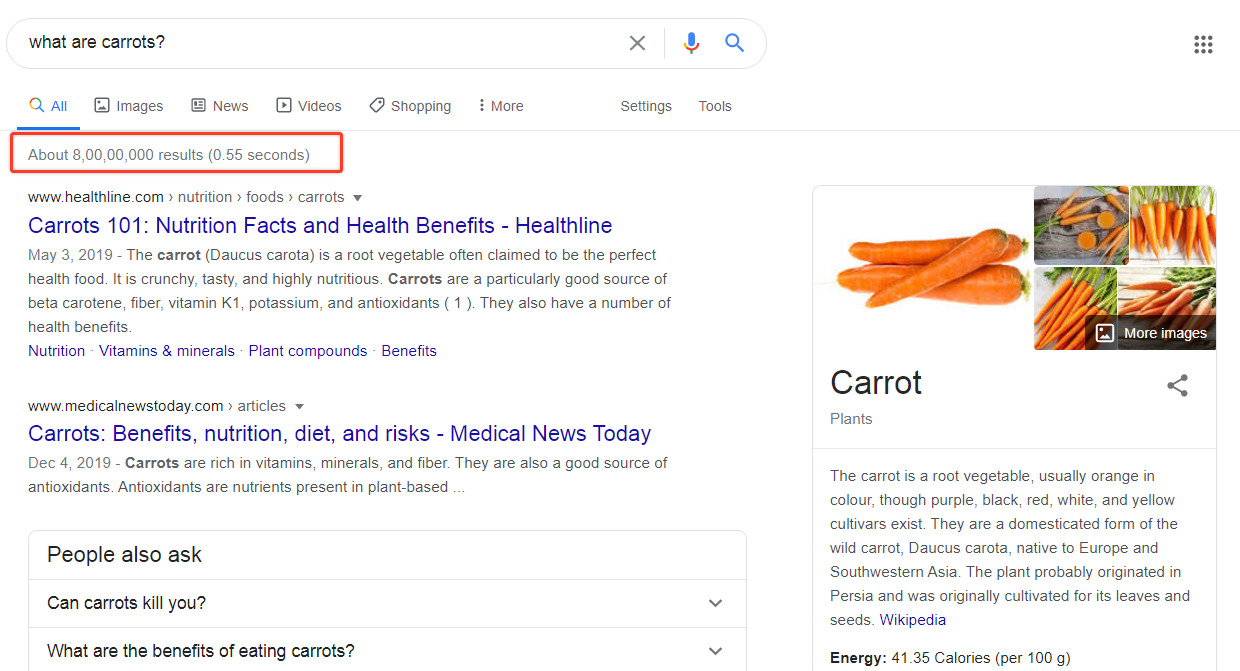
According to Google, these crawlers pay special attention to new sites, changes to existing sites and dead links. What this means is that you don’t necessarily need to tell Google about your website in order to appear in search results.
Actually, most sites you see listed in results aren’t manually submitted for inclusion, instead, they’re automatically found and added by crawlers that are constantly searching (or crawling) the web.
But why should you care about this? It’s because keeping in mind how search engines collect data about your site can help you rank higher. That’s the first lesson here: search engines will reward or even give your site a demerit, automatically.
Step 1: Optimize your WordPress website for search engine
How is SEO in WordPress different from SEO on other platforms? For one thing, it’s easier to manage, as you’ll see here.
To start, you’ll want to inspect your website: performance, settings, all of it. Resolve as many issues as you can. Here’s a brief look at the most important things you should remember to check:
WordPress website settings
In this section we look only at a couple of settings because they have a direct bearing on your WordPress SEO. But it’s still a good idea to also run through your other settings such as your homepage, discussion settings etc.
Enable search engine visibility
Make sure that your site isn’t being hidden from search engines. In your WordPress dashboard, go to Settings > Reading. Scroll to the bottom, to where it reads Search Engine Visibility, make sure the box “Discourage search engines from indexing this site” is unchecked.
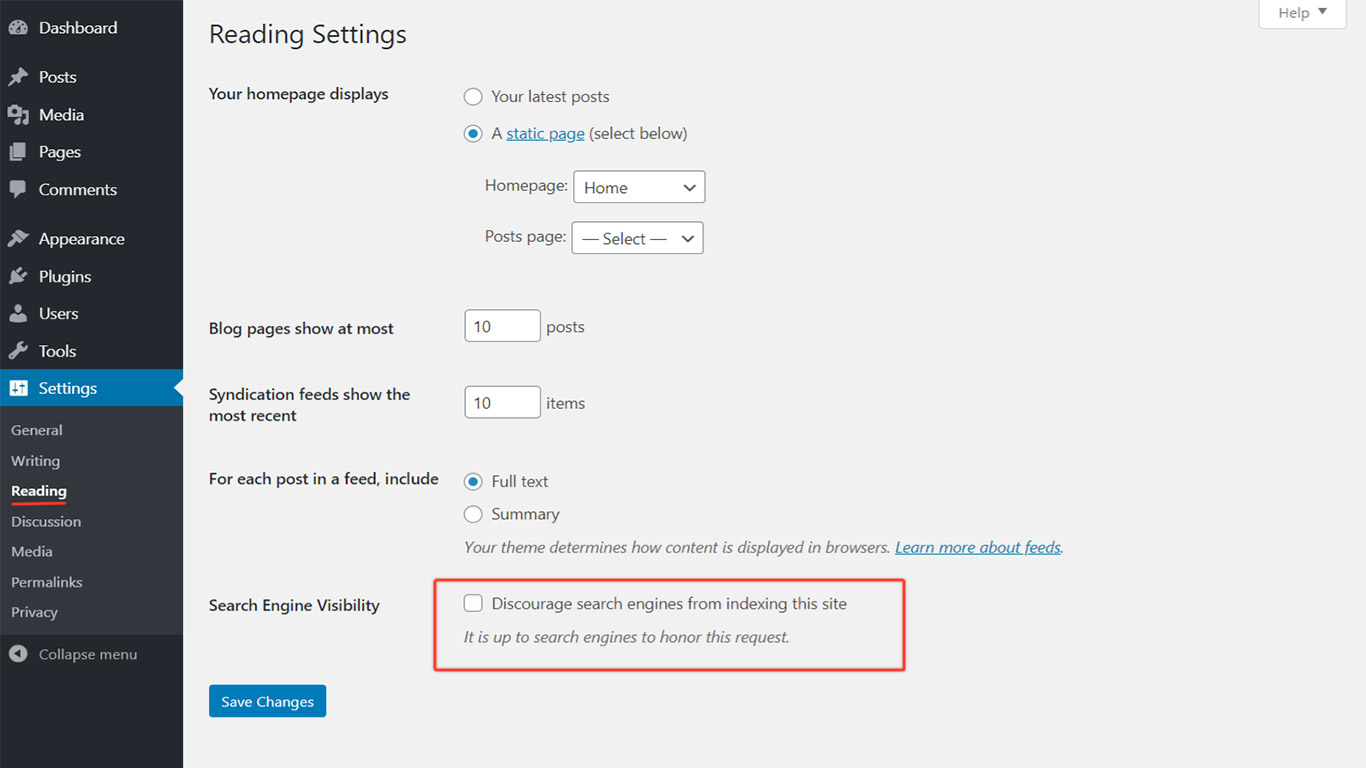
Update permalink settings
Permalink as you might be able to tell, the name is derived from the term ‘permanent link’. That said, it might not surprise you that permalink settings should almost never be changed on a live site. Making it important to think carefully about which option you’ll pick here.
Navigate to Settings > Permalinks to choose a permalink structure for your site.
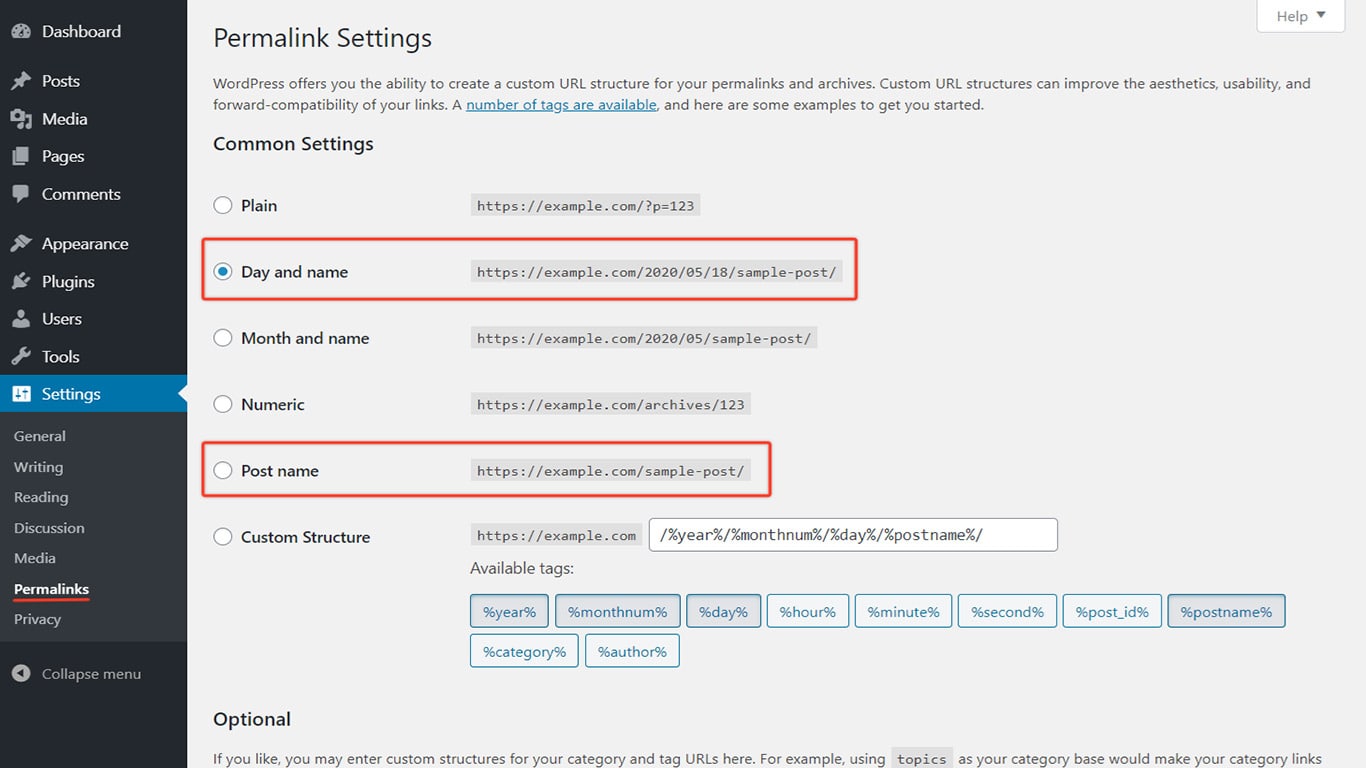
There isn’t any single “best permalink structure” favored by search engines, rather you’ll want something that is logical, easy for you and your visitors to understand and matches your content.
A popular structure that is easy to understand and use to organize content is the Post name structure.
Once you’ve decided on a basic permalink structure, you’ll also have the option to set custom structures for your category and tag URLs on this same page under the heading Optional.
Optimize website performance
You might be anxious to jump straight into deleting stuff and optimizing assets, but not yet. First let’s get a feel for how your site is doing at the minute.
This will help you measure the success of your efforts later on.
Increase website speed
There’s no easier, more reliable way to check website performance than using Google’s PageSpeed Insights.
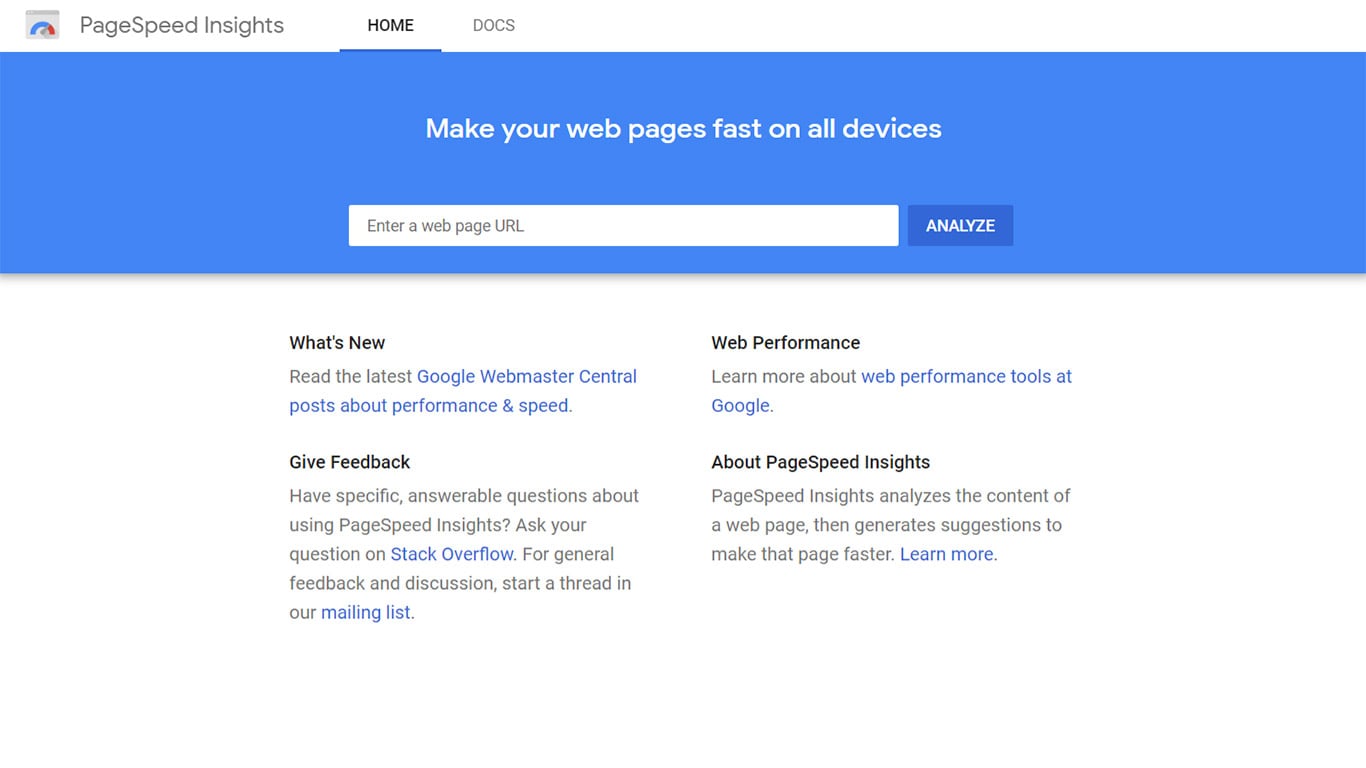
PRO TIP:
Before you begin making changes to your site, it’s usually a good idea to create a backup. And if you’re on a live site (with actual traffic from visitors), we recommend creating a staging site.
PageSpeed Insights usually won’t work on staging environments or locally hosted sites. But no worries, you can use Lighthouse – the same technology Google uses to audit your site, to measure changes there.
On its developer site, Google has even more tools and information to help you build high-performance websites.
Improving your site speed may sound rather daunting, but there’s one underrated action that can give you a massive boost in a few minutes.
Use a theme that uses the best coding practices. Usually we find a theme we like, it’s got some nice demo content, so naturally we install it and then try to optimize it so our website loads faster.
This isn’t the best way, it wastes a lot of time. Once again, nearly every theme claims to be fast, so you’ll want to test every theme that catches your attention rather than decide on a theme and then try to optimize it.
Another underestimated thing is updates. Make sure your plugins and themes are up to date and delete any unused plugins.
Especially important since WordPress runs on PHP, make sure that you carefully select which version of PHP to use with WordPress.
It’s also a good idea to carry out WordPress database optimization to delete orphaned data from time to time.
Of course, these are only the basics but they can make a massive difference to your site’s overall and search performance. For a more in-depth look at site optimization, check out these WordPress speed optimization tips to make your website blazing fast.
Make website mobile friendly
As tempting as it was to flood this section with statistics about mobile searches, we opted not to do that, realizing that many of them would soon become outdated, that’s how quickly mobile searches are on the rise.
Here’s one stat we couldn’t ignore, if you thought that most people performing mobile searches are in transit, think again: over 75% of mobile searches occur at home or at work. Remember, these are locations where desktop computers are likely to be at hand.
So a big percentage of people search on mobile devices. It only follows then that they open their favorite results on mobile devices. And that’s why search engines emphasize websites being made mobile-friendly.
Nearly every theme these days is responsive to mobile devices, or at least claims to be. In our experience, some of these themes aren’t actually that. So here’s a link you can bookmark and use to test your theme or site using another tool from Google: https://search.google.com/test/mobile-friendly.
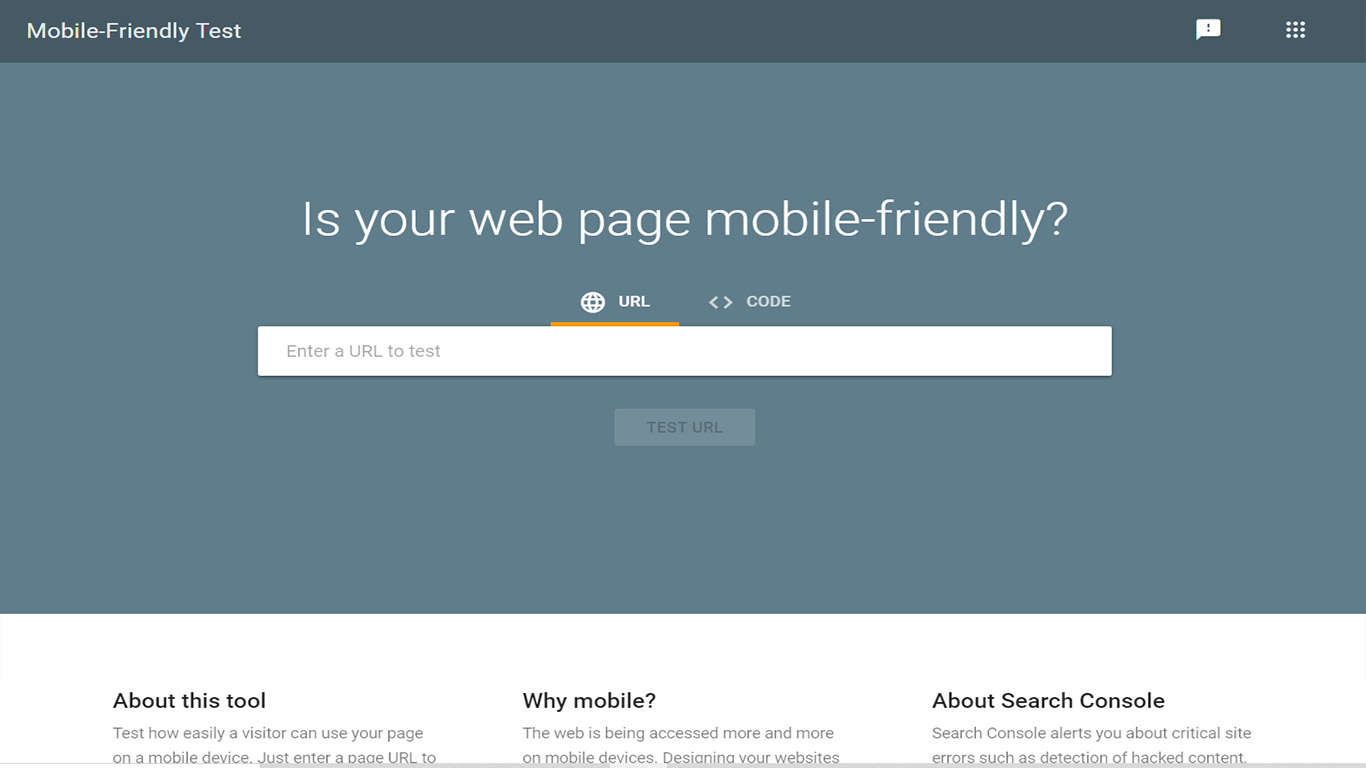
Implement AMP in WordPress
AMP or the Accelerated Mobile Page is an open source system developed by Google, which allows your user to have a better and faster experience while using their mobile browser.
And due to the significant number of users on mobile, optimizing the speed of your website on a mobile browser is important. Setting up AMP on your site, you can:
- Increase the organic traffic on your site.
- Increase engagement and conversions.
- Reduce the load on your servers
- Opportunity for your content to be featured in AMP carousel on mobile search results.
Step 2: Choose the best SEO plugins
Communicating with search engines requires a fair amount of code. You’ll want to hire someone to write that out for you (on the regular) or use an SEO plugin.
As with many areas in WordPress, you’re spoiled for choice when it comes to SEO plugins. You may already even have a particular one in mind.
- Schema Pro – Search engines now love schema and Schema Pro can help with that. Schema Pro automates much of the process of adding schema to your website. All you need to do is select the schema type, map it to your content and let the plugin do the rest!
- Yoast – This SEO Plugin is preferred by most SEO specialists. It is easy to use and has all the tools that can bring your content to the highest SEO “score” possible and improves overall readability.
- Rank Math – Is also a WordPress SEO Plugin that you can add on your site. One of the highlights of Rank Math is that it helps you identify what is wrong with a certain keyword that you are using to rank your page.
When it comes to performance, both Yoast and Rank Math have no significant difference. Although, Rank Math is quite easier to use compared to Yoast.
Also, Rank Math is a free plugin and has all the important features for SEO optimization, whereas these features are available only when you purchase the premium version of Yoast SEO.
What are some important things to look out for when choosing a plugin for WordPress SEO? Which is the most user friendly SEO plugin?
There’s no need to roll the dice here or try every single one of them. Find out the best WordPress SEO plugin to match your needs in record time.
This plugin ensures that the website is free from any potential security threats. It also scans the website and identifies if there are problems that need to be looked at. It informs the user which action to perform in order to fix the problem.
This plugin ensures that the images you uploaded on your website will not affect or slow down its speed. Image compression is a way of saving pictures in the smallest possible file size without decreasing the overall picture quality.
Step 3: Tell search engines about your website
First of all, establish whether your site is already indexed by your favorite search engines. All you have to do is type your domain name into their search bar and hit enter. If you get some results then you’re on their list (index).
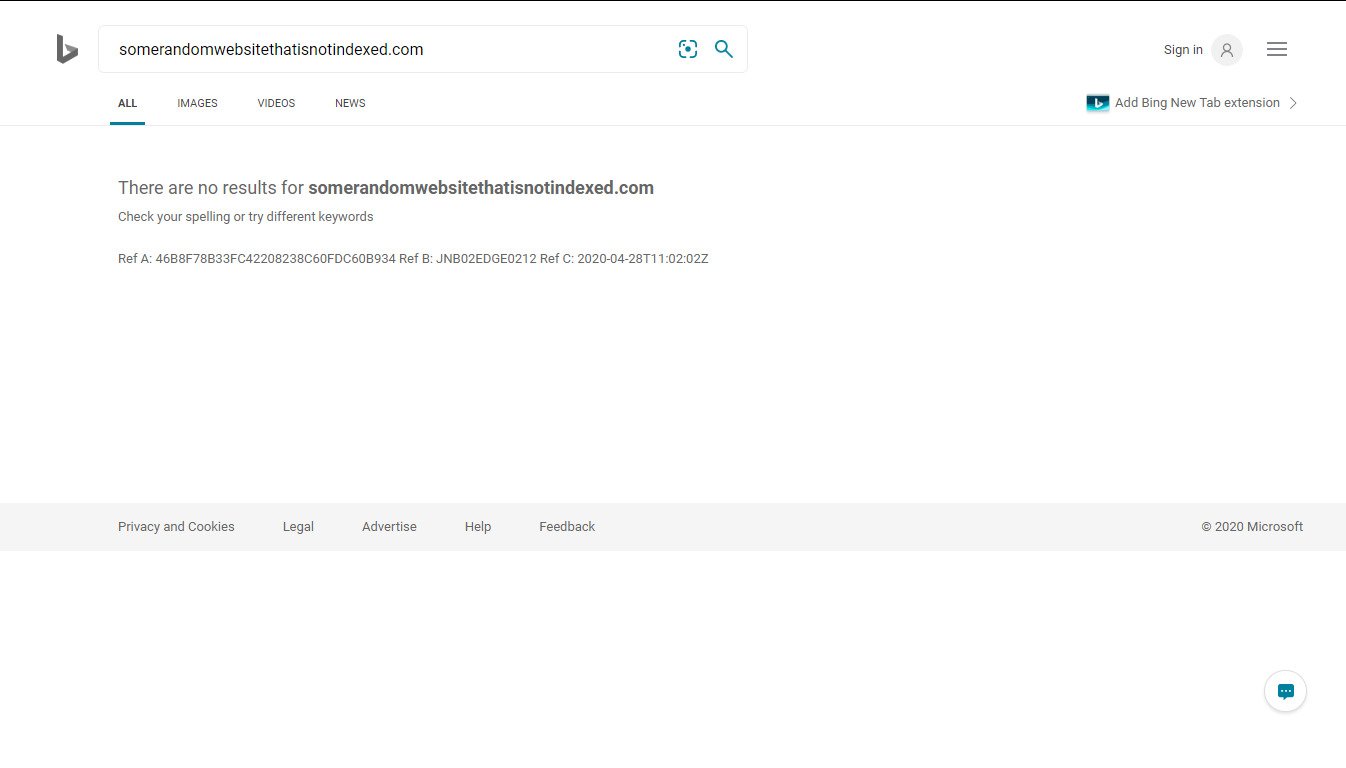
If not, you’ll want to submit your site to that search engine. You can find the right page for submitting your site to be indexed by searching something like “Bing webmaster tools” or “Google webmaster tools”.
As eager as we all are to appear and rank well in results, it’s unlikely that anyone would want every single page on their website appearing in search results.
That’s where noindex directives come in. You can explicitly instruct search engines which pages to leave out of search results in HTML or in an HTTP header by using noindex in a robots meta tag. This is the proper way to keep pages out of search engine results pages, not using a Robots.txt file as some tend to think.
Create XML sitemap
A sitemap guides your audience to where they want to go. And the main function of an XML sitemap is to allow search engines to discover and locate pages on your website owing for a greater SEO Score.
Optimize robots.txt file
A Robots.txt file is a way to tell search engines whether they can or can’t access certain parts of your site. Then why not use it to keep pages out of results?
The reason is that without a noindex directive, your page could still end up being indexed without crawlers ever visiting it. This could happen for instance, if other pages point there with descriptive text.
As such, you’re better off using this file for its intended purpose: managing/limiting crawler requests to your site.
Whether you’d like to use noindex directives or a robots.txt file, you’ll either need to be very competent with code or use a plugin.
By now, it’s probably becoming increasingly clear why many people use SEO plugins: Communicating with search engine crawlers or bots is only possible if you have some reasonable programming ability.
Submit website to search engines
One of the important things to remember is submitting and indexing your website to popular search engines like Google Search Console, Yandex, and Bing Webmaster. These search engines offer valuable SEO tools for your website for free. It helps you analyze the traffic on your website as well as provide you the keyword volume related to your content.
In addition, submitting your website to search engine will:
- Make sure search engines index your site,
- Let search engines know exactly what’s important on your site, and
- Use search engine-specific tools to improve your site’s overall ranking.
Step 4: Optimize your website content
Improving your site content, hierarchy, images and speed will make users happy. We know what happy users will do, share! And guess what? Search engines will notice that.
Optimize content for SEO
We start with content because as the old adage goes “Content is King”. There’s no point having a website that loads in 0.1 seconds but has nothing on it (a blank page). Same applies to having your site load in 3 seconds but only to do so with poor content (as good as a blank page).
That said, the most important thing to optimize, and the thing you should spend most of your time optimizing is content.
The best way to optimize your content is to put yourself in the shoes (or glasses) of your readers. With every piece of content, think about what your users expect to get and try to deliver on that.
For example, if there are already a hundred articles on WordPress SEO, and there are, why would anyone spend time reading one that isn’t unique, isn’t easy to understand and doesn’t cover what was missed in the hundred articles prior?
That said, every piece of content on your website should be unique, easy to read, comprehensive enough and match the expectations of your audience.
No wonder, search engines tend to favor posts that:
- Use distinctive titles (Unique)
- Don’t use very long titles and paragraphs (Easy to read)
- Have 300 words or more (Comprehensive)
- Link to more valuable content (Expectations of audience)
Optimizing blog posts
As part of your content, blog posts play an important role in getting traffic on your website. Optimizing your blog content is making your website visible to people who are entering a focus keyword associated with your business through search engines like Google.
Use focus keywords
A focus keyword or keyphrase is a search term that you want a page or post to rank for most It allows the search engine to evaluate which content it will display depending on the optimized keyword or keyphrase you added on your content.
Create detailed lengthy articles
There are no particular rules with regards to the length of your blog post, that said, with the ongoing Google update trend, the accepted count leans more toward articles with at least 1,760 words or, safe to say, 2,000 words. Regularly, on the off chance that you are using an SEO plugin, you will see the ideal content length for the main page should not be in excess of 900 words.
Implement schema markup and rich snippets
Planning markup, found at Schema.org, is a kind of microdata. Once added to a site page, design markup makes an overhauled delineation (normally known as a rich bit), which appears in question things.
There are a number of plugins for schema markups that will add schema on your website.
Remember that adding Schema Markup on your AMP is highly recommended by Google.
Create hierarchy
Use a secure (HTTPS) connection rather than an insecure (HTTP) one. This is because search engines tend to give a certain amount of priority to sites that use a secure protocol.
Www or non-www for SEO?
Unlike whether you’re using HTTPS, crawlers don’t care if you use www or non-www on your site. However, like many things in the “SEO world”, you’ll want to avoid needlessly changing this.
Especially considering that Google essentially considers www.yoursite.com and yoursite.com as different websites. However, a small advantage of non-www versions is that they are shorter, which can make for better sharing.
One of the easiest things you can do to improve your site’s chances of ranking higher in results pages is adding breadcrumbs to your website.
Add breadcrumbs
Breadcrumbs are a secondary navigation system showing a user’s location relative to the homepage on a website or web app.
PRO TIP:
Learning about and getting started with breadcrumbs is easy with the help of this astonishingly straightforward guide: How to Add Breadcrumbs to Your WordPress Website.
How do search engines feel about breadcrumbs?
Search engines recommend using a breadcrumb navigation trail whenever possible because it helps them better understand the role each piece of content has on your website.
Apart from giving search engines the warm fuzzies, you’ll at the same time help visitors quickly find the content they want, it’s a good old-fashioned win-win.
Add SSL to your website
As mentioned, the extra “S” on your HTTPS is preferred by users and search engines. It delivers a level of confidence when it comes to security.
By definition, SSL certificates are small data files that cryptographically establish an encrypted link between a web server and a browser. This connection guarantees that all information sent between the website user and server remains private. The main reason why SSL is important is that it gives a level of confidence to your users and Search Engines that you’re not exposing your user’s data to the bad guys of the internet.
It’s especially important if you have an eCommerce website. Since your website is technically going to be hosting and processing a lot of your customers’ data.
Optimize images (Size, alt text, URL)
It’s easy to associate image optimization to things like compression, resizing and lazy loading and that is what optimizing images is about.
However, when it comes to SEO, optimizing images is also about providing plenty of information (giving context) about those images to search engines and doing so in a way that they can understand.
This includes improving image file names, captions, alt text, descriptions and more. That said, each image on your site will usually need some individual attention.
Although this process can be somewhat automized with the help of some image tools, a lot of the time you’ll still need to check individual images.
Here are a few tips about Image SEO:
- Informative file names. Tree.png is better than Image-1.png.
- Use HTML for images you want indexed
This list obviously isn’t conclusive and let’s face it, remembering everything on a long list with every upload may be challenging.
That’s where SEO plugins come in. Good SEO plugins remind you to check the images that require your attention so that your image SEO is on point.
There are also a few plugins that deal only with “Image SEO”, you may want to search that term in the plugins directory if that sounds like something you would be interested in.
If optimizing images sounds like a lot of work and you’re wondering whether it’s worth it, the answer is an absolute yes.
That is, yes it is involving and yes it does pay off! Some sources even claim that image searches account for more than a one fifth (⅕) of organic traffic from Google.
But keep in mind, it’s not all “ups” when it comes to using SEO plugins, more on this in our post about the best SEO plugins for WordPress.
If you’re looking to increase your dividends even further,
Do keyword research
In adding content to your site or blog, it is sometimes helpful if you have data on what people are searching for online. Keyword research has been an effective research technique used by SEO specialists. Through the data collected, you will be able to figure out helpful keywords that users use on the search engine to look for products and services.
It is also important that you know how to optimize your blog posts, oftentimes activating your WordPress SEO Plugin is not enough. We know that SEO keeps on updating, it is always best if you have an external SEO plugin that will allow you to add and optimize the title, focus keyword, descriptions, and the page to reach a maximum result.
Take note that when choosing a focus keywords or keyphrase, also include a good title and meta description.
Remove low-quality content
Low-quality content is a page on your website that adds little to no value to the user. It could be either an empty page or a broken page. Duplicated pages are also considered as low-quality content.
Low-quality content is bad for your site. Make it a habit to always update the content of your website.
At SkillJet, We have SEO Foundations course that covers the fundamentals of SEO including website optimization, keyword research, link building, and much more.
Step 5: Other SEO optimizations
With optimizing page categories, we normally start with the headings. In the page’s H1, use the focus keyword that is probably going to attract clients. This is important since a page’s header helps web indexes and clients to understand what the website is all about.
WordPress Comments
The comment section on your site indicates traffic and engagement on your website. However some of these comments might be spam. Akismet, which is one of the two plugins that come pre-installed with every WordPress site, helps you combat comment spam.
Although having a ton of genuine comments for your website is good, it sometimes affects the speed of your site which is also bad for your ranking. To address this issue, we recommend splitting the comments into pages to avoid compromising the speed of your site.
Make External Links nofollow
Links are very helpful when it comes to a search engine, and sometimes you will get comments that have external links in it which might affect your SEO score or your site’s “link juice” Adding the “no follow” attribute to external links allows search engines not to follow those links.
Content Duplication
Copied content will be content that is a precise copy of the substance on different sites or on various pages on a similar site.
Best practices/ What to avoid
If we attempted to recount all the things you should do and avoid doing to rank at the top in SERPs, time would fail us. And if it didn’t, it would certainly fail you.
So here are some fairly simple, very beneficial ways to stay on the right side of those crawlers on their way to your site right now:
What you should do:
- Always check, bad SEO practices carry a high penalty.
- Use Schema markup for rich results
- Use Image Sitemaps.
You’ll want to avoid:
- Paying for traffic. Many services claim to send “real” traffic but they will send bots. And that will harm your SEO, adversely.
- Linked/Being linked to by bad sites. Again, many services claim they can give you “SEO juice” through backlinks on sites with high domain authority (DA). You’ll want to be very careful, or even better, avoid these.
- 404 Errors by using 301 Redirects (Check out the complete guide to 301 redirects in WordPress)
Final thoughts on WordPress SEO
WordPress SEO is hard. But like many hard tasks, there’s a reward. Getting on the first page of search results is not impossible after all.
Keep in mind that Rome wasn’t built in a day, avoid practices that are bad for SEO, keep working on those best practices and you will get there.
This article covered what SEO is and how it works, showed you how to get started with WordPress SEO and then covered how to optimize your site content, hierarchy, images and speed for better ranking.
We even looked at the importance of having a responsive website along with the need to avoid practices that will hurt your SEO.
If you haven’t already done so, you’ll want to see how you can pick the best SEO plugin so you can rank higher sooner rather than later.
A good SEO plugin will get you even better results alongside a good SEO friendly theme. Check out Astra, the most SEO friendly theme today.
Disclosure: This blog may contain affiliate links. If you make a purchase through one of these links, we may receive a small commission. Read disclosure. Rest assured that we only recommend products that we have personally used and believe will add value to our readers. Thanks for your support!
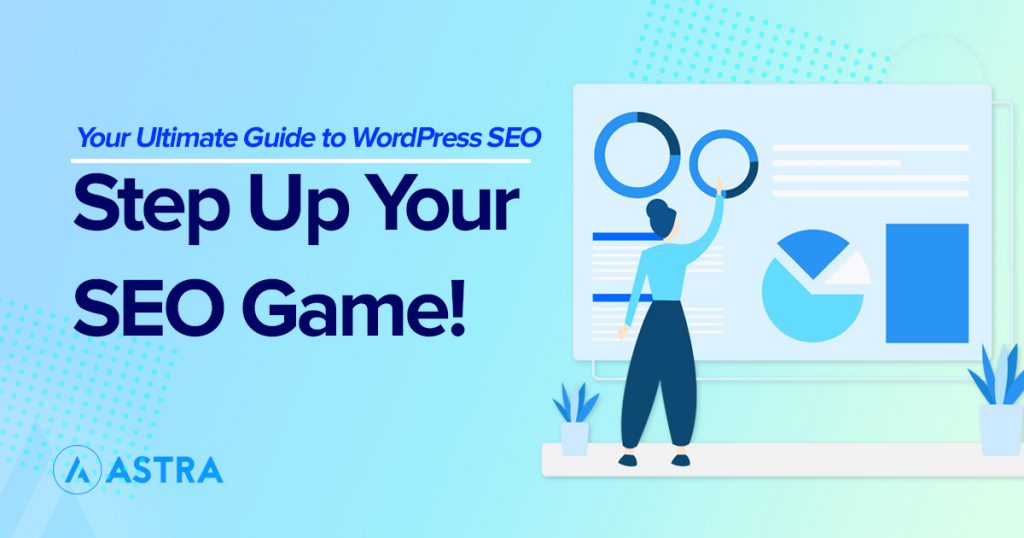





Its been a while since the last time I built a website and did SEO on WordPress. I mean, although the fundamentals of SEO remains the same but there are a lot of things new to me. Reading this article refreshed my knowledge and I kind of need it.
I agree that the page speed really affects the SEO ranking of the website. Who would visit a website that loads up more than 10 seconds right? Moreover, most of the key-points in this article are very helpful.
Thanks! Great Job!
As a mobile user, I really prefer websites that are optimized to be mobile friendly. Knowing that it’s really hard to zoom each corner of the website just to read the information I need.
This being said, it is one of the factors that makes me check other websites that are mobile friendly. I really do hope that some website owner visit and read this article and consider optimizing their current website!
Good read!
This article is a gem!
I am a student and wanted to learn website building on WordPress and the of course SEO. I am really interested in this type of job, since one of my friend mentioned that the opportunity is massive.
This article helped me understand some of the essentials in SEO. One thing that struck me while reading the article is “”Content is King””. I can not agree more, aside from the design of a website, what really takes the interest of visitors like myself is the content.
Awesome article. This is very informative.
I have been searching for SEO guides online since this morning, like literally reading all of them one by one. And so far, yours are completely packed. The information from your article are highly appreciated.
I already bookmarked it for future reference. I think this article is very helpful especially for those who are just starting out with SEO.
More Power!
Probably the most honest article about SEO that I’ve read.
“Improving your site content, hierarchy, images and speed will make users happy.”
Yes! Aside from the content, images, one of the most important attribute of the website is the speed. I am a user myself, and it is one of my pet peeves that the website would takes a century to load up.
KUDOS!
I just knew the difference between HTTPS and HTTP, like honestly!
Thanks for the information!
So, having a high resolution photos/images on your websites makes it slow? How much pixel or resolution can you recommend on an image for a website?
Thank you in advance!
Its been a while since the last time I built a website and did SEO on WordPress. I mean, although the fundamentals of SEO remains the same but there are a lot of things new to me. Reading this article refreshed my knowledge and I kind of need it.
I agree that the page speed really affects the SEO ranking of the website. Who would visit a website that loads up more than 10 seconds right? Moreover, most of the keypoints in this article are very helpful.
Thanks! Great Job!
Hello Jk,
Glad you found it useful! 🙂
As a mobile user, I really prefer websites that are optimized to be mobile friendly. Knowing that it’s really hard to zoom each corner of the website just to read the information I need.
This being said, it is one of the factors that makes me check other websites that are mobile friendly. I really do hope that some website owner visit and read this article and consider optimizing their current website!
Good read!
Hello Mandie,
Thank you for your thoughts and glad to hear you found it useful! 🙂
This article is a gem!
I am a student and wanted to learn website building on WordPress and the of course SEO. I am really interested in this type of job, since one of my friend mentioned that the opportunity is massive.
This article helped me understand some of the essentials in SEO. One thing that struck me while reading the article is “Content is King”. I can not agree more, aside from the design of a website, what really takes the interest of visitors like myself is the content.
Awesome article. This is very informative.
Hello Robert,
Glad you found it useful! 🙂
I have been searching for SEO guides online since this morning, like literally reading all of them one by one. And so far, yours are completely packed. The information from your article are highly appreciated.
I already bookmarked it for future reference. I think this article is very helpful especially for those who are just starting out with SEO.
More Power!
That’s awesome!
Your comments are much appreciated. 🙂
Probably the most honest article about SEO that I’ve read.
“Improving your site content, hierarchy, images and speed will make users happy.”
Yes! Aside from the content, images, one of the most important attribute of the website is the speed. I am a user myself, and it is one of my pet peeves that the website would takes a century to load up.
KUDOS!
Hello Bella,
So glad to hear that! 🙂
Hello
How can change OPEN GRAPH meta in astra theme I want to change its defullt open graph.
thank you very much for the SEO guidance that helped my blog …
Hi.
I have been told that for SEO reasons we shouldn’t use more than one H1 tag in a page or post. The problem I noticed is that when we activate the “site title” option on Astra header, It will show the title of my site using a H1 tag and this would conflict with the main H1 tag of my content. So, How can we solve this?
Thanks in advance.
Hello Ivan, can you try updating to the latest version 3.7.4 to see if it helps?
Hi there. I’m using last version of theme (3.7.4) and the issue still the same.
Also I realised that if I do not use the site title on header settings we can’t see it but it still existing, we can see it in hmtl code, as you can see in printscreen: https://snipboard.io/GKaYx1.jpg
I’ve heard that multiples H1 would not be a big concern about SEO as we can think, but I still can’t understand why use H1 for site title. Analysing titles structure it makes non sense for me.
Astra Pro Is Ready For Adsense?
Yes, Astra Pro is suitable for AdSense. Astra, including its Pro version, is known for being fast loading and ideal for SEO, which are important factors for AdSense optimization. It is also flexible and can be customized to fit AdSense ads effectively. The theme offers a selection of high-quality free and premium website templates that use drag and drop page builders, making it simple to build your site and place ads where you want them.